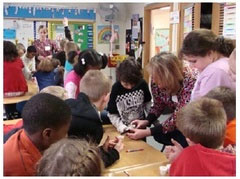
New WHO Checklist Supports Schools Reopening Amid Covid Crisis
The checklist aims to help improve adherence to existing Covid-19-related public health and social measures designed to protect children.
A new WHO checklist to support schools reopening and preparation for Covid-19 resurgences or similar public health crises, lists 38 essential actions to be considered by different stakeholders as they work together to agree school reopening plans.
According to data collected by UNESCO, classrooms for nearly 1 in 5 schoolchildren globally – or 320 million – are closed as of 1 December, an increase of nearly 90 million from 232 million on 1 November.
In some places, children have been out of school for 9 months or more. Prolonged school closures in response to the Covid-19 pandemic are presenting an unprecedented challenge to children’s education, health and well-being worldwide. The longer a student stays out of school, the higher their risk of dropping out.
As school closure numbers continue to soar and many schools break for holidays, a new WHO checklist aims to support the different levels of decision-making (national, local, and the schools themselves) that are needed in order to reopen schools safely.
The checklist also aims to help improve adherence to existing Covid-19-related public health and social measures designed to protect children under the age of 18 years in educational settings.
“Schools can reopen safely,” says Dr Ruediger Krech, WHO Director of Health Promotion. “Decisions to reopen schools should be driven by data and the safety measures in place, but also address the concerns of students, parents, caregivers, and teachers. These concerns are best addressed if reopening approaches are co-designed with students, parents, caregivers, and teachers.”
Developed in accordance with the health-promoting schools principles, the checklist aims to enhance compliance and adherence to the public health measures outlined in the recently updated Considerations for school-related public health measures in the context of Covid19.
It focuses on protective measures such as, hand hygiene and respiratory etiquette; physical distancing; use of masks in schools; environmental cleaning and ventilation; and respecting procedures for isolation of all people with symptoms.
Of the 38 essential actions, 21 focus on individual school-level measures to ensure the school returns to equitable and high-quality education while safeguarding the health and well-being of all students. Some of these school-level actions include reorganizing school layouts to space desks or changing school schedules to stagger recesses and breaks, depending on the local context.
There is one set of actions to prepare to reopen schools and another to prepare schools for Covid-19 resurgences. The checklist was developed by WHO, in collaboration with UNESCO, the World Food Programme, UNICEF, and members from the health-promoting schools expert working group.



